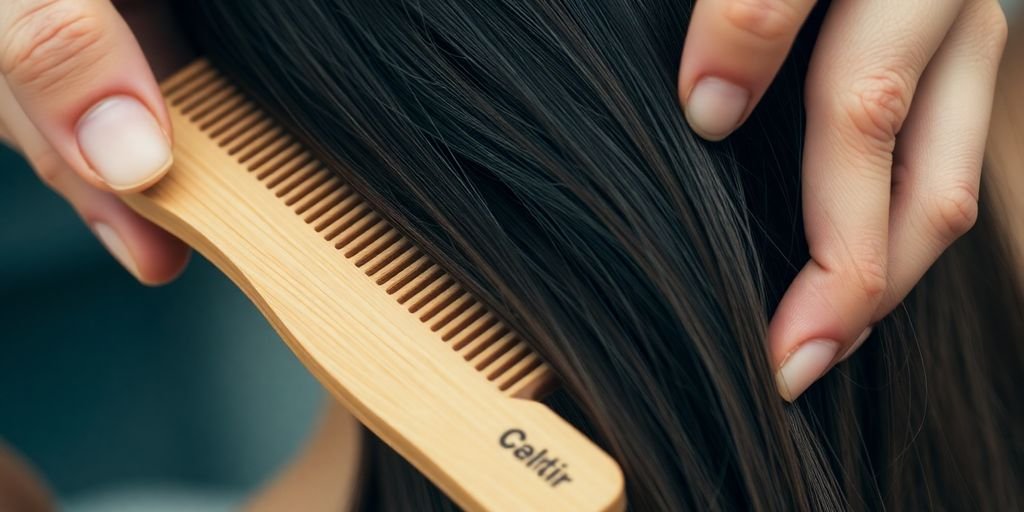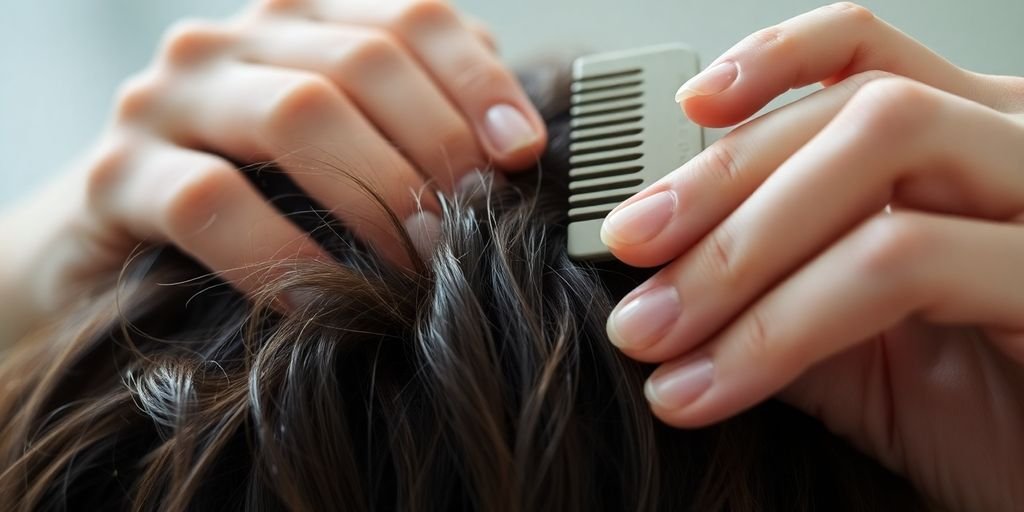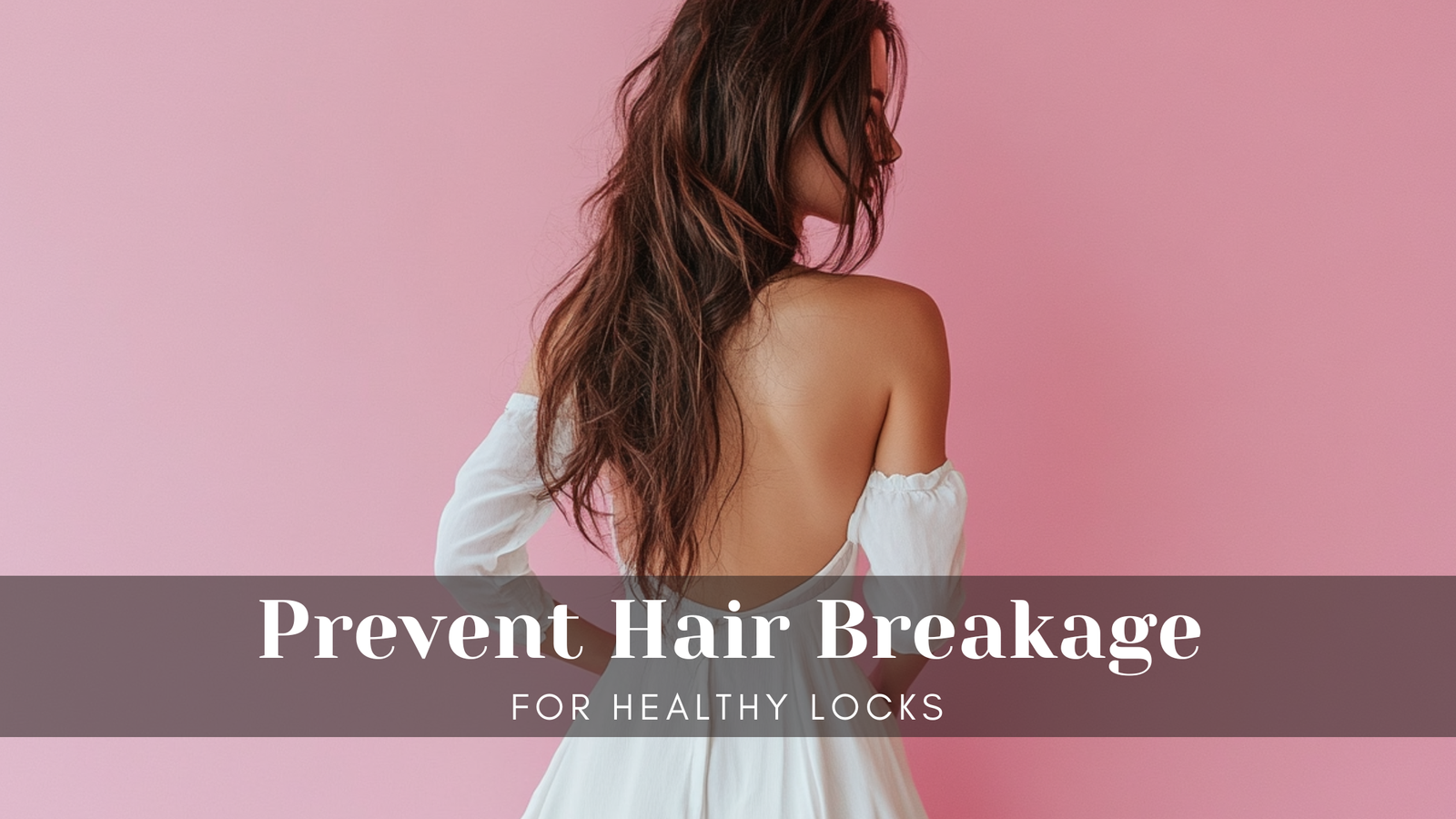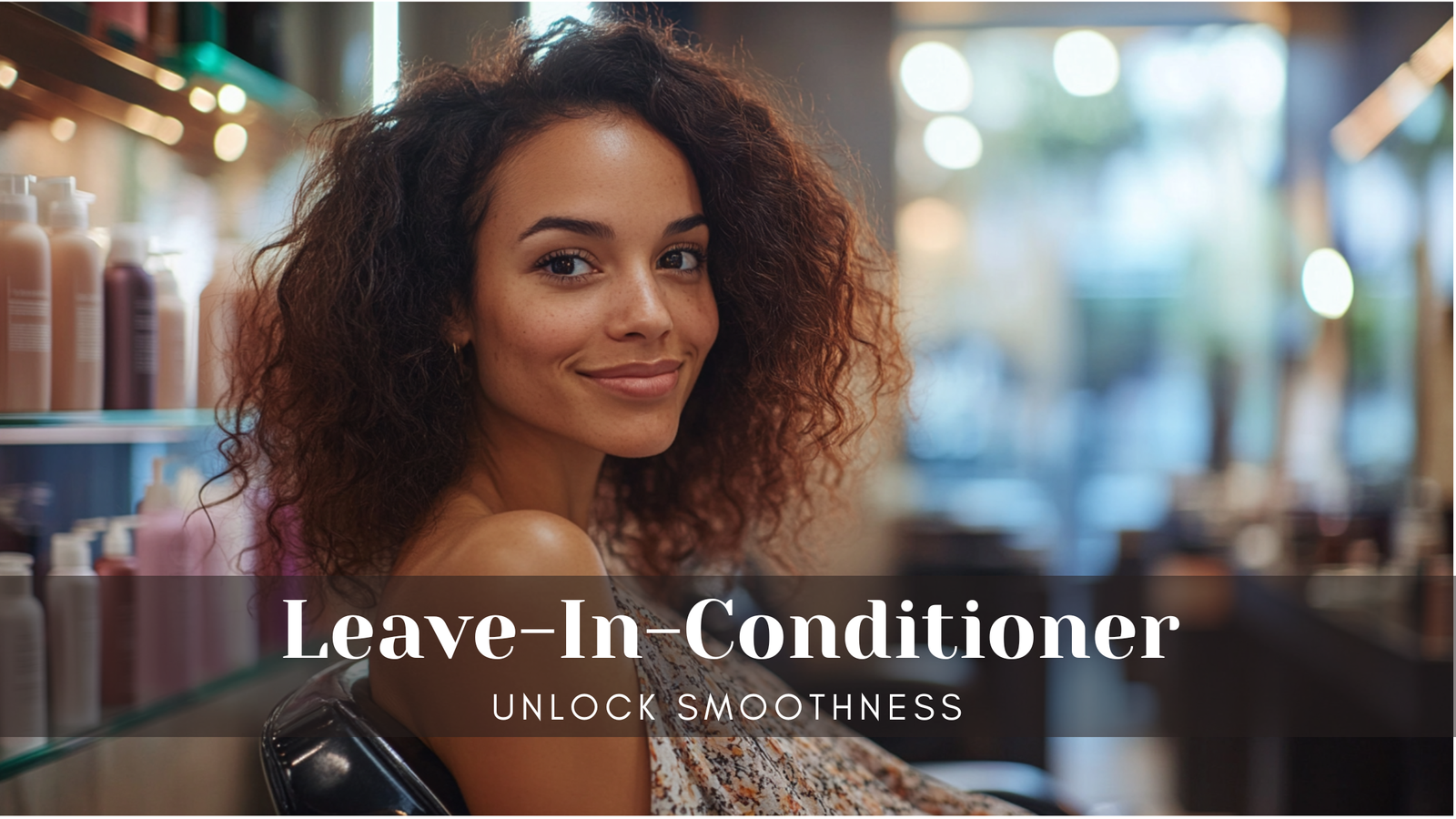
So, you’ve got a head full of matted hair and no clue where to start? You’re not alone. Whether it’s from skipping a few too many brush sessions or just the nature of your hair, those tangles can sneak up on you fast. But don’t worry, with a bit of patience and the right moves, you can get those knots out without losing your mind—or too much hair.
Key Takeaways
- Matted hair often results from neglecting regular brushing and moisture issues.
- Using the right tools like wide-tooth combs and detangling sprays can make a big difference.
- Sectioning your hair can help manage and simplify the detangling process.
- Techniques like the picking method or twisting can help with stubborn knots.
- Regular hair maintenance and protective styles can prevent future matting.
Understanding the Causes of Matted Hair

The Role of Hair Texture in Matting
Matted hair is a struggle many face, especially those with curly, wavy, or coily hair. These hair types are more prone to matting due to their unique structure. The natural oils from the scalp have a harder time traveling down the twists and turns of curly hair, leaving it drier and more susceptible to tangling. Each curl can become a potential knot, leading to a tangled mess if not properly cared for. It’s not just a matter of skipping a brush; it’s how the hair naturally behaves.
Impact of Neglecting Regular Brushing
Skipping regular brushing is like inviting tangles to a party on your head. When you don’t brush your hair often, the strands can easily intertwine, forming knots that become more complex over time. This is especially true for those with longer hair, as the length provides more opportunities for tangles to develop. A simple daily routine of brushing can prevent these knots from forming, keeping your hair smoother and more manageable.
How Moisture Contributes to Tangles
Moisture can be both a friend and a foe when it comes to hair care. While keeping hair hydrated is essential, exposure to moisture without proper detangling can lead to matting. Water causes hair to swell, opening up the cuticle and making it more prone to tangling. This is particularly true if you love swimming or often get caught in the rain. Moisture, combined with a lack of detangling, sets the stage for serious matting, turning what should be a simple hair care routine into a tangled challenge.

Essential Tools and Products for Detangling
Choosing the Right Comb or Brush
When it comes to detangling matted hair, the right comb or brush can make a huge difference. Wide-tooth combs are your best friend here. They glide through hair more easily than fine-tooth combs, reducing the risk of breakage. If you’re dealing with thicker hair, a paddle brush with flexible bristles can also be effective. Remember, the goal is to gently work through tangles, not force them out.
Benefits of Using Detangling Sprays
Detangling sprays are like a magic potion for tangled hair. They add moisture and slip, making it easier to comb through knots without pulling. When choosing a detangling spray, look for one that suits your hair type—some are designed specifically for curly or textured hair. A quick spritz can transform a painful detangling session into a much smoother experience.
The Magic of Hair Oils in Detangling
Hair oils aren’t just for adding shine—they’re also fantastic for detangling. A few drops of oil can lubricate the hair shaft, allowing knots to slide apart more easily. Argan oil, coconut oil, and jojoba oil are popular choices. They not only help with detangling but also nourish the hair, leaving it softer and more manageable. Apply a small amount to your hands and gently work through the matted areas for the best results.
Detangling doesn’t have to be a dreaded chore. With the right tools and products, it can become a part of your self-care routine, leaving your hair healthier and more beautiful.
Step-by-Step Guide to Detangling Matted Hair

Preparing Your Hair with Moisture
First things first, get your hair wet. This might seem obvious, but trust me, it makes a world of difference. Use a spray bottle filled with water to dampen your hair or hop in the shower to get it thoroughly wet. Water helps loosen up the tangles and makes the whole process a lot easier. Don’t skip this step, as dry detangling can lead to unnecessary breakage.
Sectioning Your Hair for Manageability
Facing a whole head of matted hair can feel like a mountain to climb. But breaking it down into smaller sections? That’s your secret weapon. Use hair clips to divide your hair into manageable parts. If your hair is thick, aim for around six sections; if it’s thinner, two to four should do. This not only makes the task less daunting but also ensures you’re thorough, reducing the chance of missing hidden tangles.
Using Fingers and Combs Effectively
Start with your fingers. Yes, your fingers are excellent tools for gently pulling apart the easier tangles without causing extra damage. Feel your way through the knots, and once you’ve loosened them a bit, bring in a wide-tooth comb. Work from the ends of your hair and gradually move up to the roots. This method helps prevent pushing knots tighter, which can happen if you start from the top. Remember, patience is your best friend here.
Detangling matted hair is a test of patience and care. It’s not just about removing the knots but doing so in a way that keeps your hair healthy and strong for the long haul.
Techniques for Tackling Stubborn Knots

The Picking Technique Explained
When you’re dealing with those really tough knots, think of the picking technique as your secret weapon. Grab a comb with a pointed tail or a hair pick, and start working from the outer edges of the knot, slowly moving inward. The idea is to gently tease the knot apart, bit by bit, without pulling too hard. This method requires patience, but it can save your hair from unnecessary breakage.
Twisting and Pulling Method
Sometimes, a little twist can do wonders. Take the section of hair with the knot and twist it gently. While holding the twist, try to pull the knot out slowly. This can help loosen it up, making it easier to slide out. It’s like giving the hair a gentle massage, coaxing the knot to let go without a fight.
When to Consider a Trim
Let’s face it, some knots are just too stubborn. If you’ve tried everything and the knot is still hanging on for dear life, it might be time to consider a small trim. Trimming the knot out can be the most pain-free solution, and it often saves the surrounding hair from further damage. Plus, a fresh trim can leave your hair looking healthier overall.
Detangling doesn’t have to be a battle. With the right moisture, tools, and techniques, you can turn a tangled mess into smooth, flowing locks. Remember, it’s not just about getting the knots out—it’s about doing it in a way that keeps your hair healthy for the long run. If things get too tough, don’t hesitate to reach out to a professional hairstylist. They have the expertise and tools to handle even the most severe cases of matting.
For a detailed guide on starting the detangling process, check out our saturating method with conditioner.

Preventing Future Matting and Tangles
Importance of Regular Hair Maintenance
Keeping your hair free of tangles starts with regular care. Routine brushing or combing is key. For most hair types, a daily detangle session does wonders. Use a wide-tooth comb or a detangling brush, starting from the ends and working your way up to the roots. This prevents small knots from turning into a tangled nightmare. Also, consider scheduling regular trims. Trimming every 6-8 weeks helps eliminate split ends that can cause tangling.
Protective Hairstyles and Accessories
Opt for protective hairstyles to keep your strands safe from tangling. Styles like braids, buns, or twists can help reduce friction and keep your hair neat. At night, consider wrapping your hair in a silk or satin scarf or using a silk pillowcase. This reduces friction while you sleep, preventing knots from forming. Hair accessories like soft scrunchies or clips can also help keep hair organized without causing breakage.
Daily Habits to Keep Hair Knot-Free
Developing daily habits can significantly reduce the risk of tangling. Here are a few tips:
- Hydrate your hair: Keep your hair moisturized with leave-in conditioners or hair oils. Moisture helps prevent dryness, which can lead to tangles.
- Avoid harsh products: Stay away from products with alcohol or sulfates, as they can dry out your hair.
- Gentle handling: Be gentle when styling or washing your hair. Tugging and rough handling can create tangles.
Regular care and protective measures can transform your hair care routine, keeping tangles at bay and your hair looking its best. With a little patience and the right habits, you can say goodbye to pesky knots for good.

When to Seek Professional Help
Signs You Need a Stylist’s Expertise
Sometimes, tackling matted hair at home feels like trying to solve a puzzle with missing pieces. If detangling causes pain, excessive hair loss, or breakage, it might be time to visit a professional. A stylist can assess the situation and offer solutions tailored to your hair type and condition.
Benefits of Salon Treatments
Salons are equipped with specialized tools and products that aren’t typically found at home. These include professional-grade detangling sprays and treatments that can make a world of difference. Plus, the expertise of a stylist means they can handle even the most stubborn knots with ease, often saving more of your hair in the process.
Specialized Tools and Products at Salons
Stylists have access to advanced tools like high-quality detangling brushes and combs, designed to reduce stress on your hair. They also use specialized products that provide extra slip and protection, making the detangling process smoother and less damaging.
When your hair feels like a fortress of knots, remember that a professional stylist is just a call away. They not only have the skills but also the right tools to bring your hair back to life without unnecessary damage.
If you’re dealing with hair extensions, regular maintenance and professional installation are key to preventing tangles and slippage.
Wrapping It Up: Taming the Tangles
So, there you have it. Untangling matted hair might seem like a daunting task, but with a bit of patience and the right approach, it’s totally doable. Remember to keep your hair hydrated, use the right tools, and take your time. If things get too tricky, don’t hesitate to reach out to a professional stylist. They’ve got the skills and tools to help you out without causing damage. And hey, if you end up needing a trim, it’s not the end of the world—sometimes a fresh cut is just what your hair needs. Keep these tips in mind, and you’ll be on your way to smooth, tangle-free hair in no time. Happy detangling!

Frequently Asked Questions
What causes hair to get matted?
Hair can get matted when strands twist and tangle together, often due to skipping brushing, moisture exposure, or the natural texture of curly hair.
How can I detangle matted hair without causing pain?
Start by adding moisture with water or a detangling spray. Use your fingers to gently loosen knots, then follow with a wide-tooth comb, working from the ends to the roots.
What tools are best for detangling matted hair?
A wide-tooth comb, detangling brush, and detangling spray or conditioner are great tools to help gently untangle matted hair.
Should I cut out stubborn knots in my hair?
If a knot is too tight and all other methods fail, trimming it out might be the best option to prevent further damage.
How can I prevent my hair from matting in the future?
Regular brushing, using protective hairstyles, and keeping your hair moisturized can help prevent matting.
When should I see a professional for matted hair?
If detangling at home is painful or causing hair loss, it might be time to seek help from a professional hairstylist.
RELATED POSTS
View all



